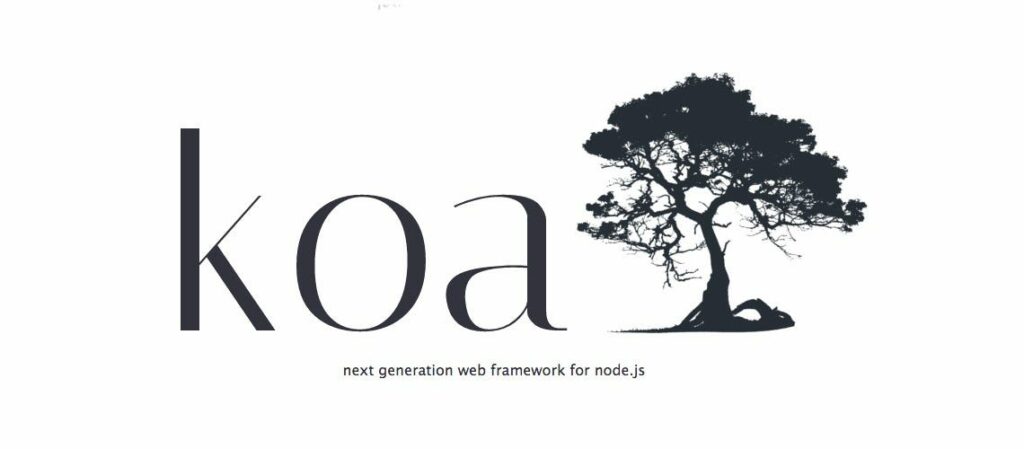In the fast-evolving world of web development, Node.js has emerged as a pivotal technology, revolutionizing how we think about backend frameworks. It’s not just about lines of code and technical specifications; it’s about the way these frameworks empower developers to build robust, scalable, and efficient web applications. As the digital landscape continues to expand, the choice of backend framework becomes increasingly crucial. This blog post delves into the top Node.js backend frameworks, guiding you through their features, benefits, and what makes each one stand out. Whether you’re a seasoned developer or just starting out, understanding these frameworks is key to navigating the dynamic terrain of web development. So, let’s embark on this journey and explore the top node JS backend frameworks that are shaping the future of the web.

Express.js: The Swift and Flexible Giant in Node.js – the base of many Node.js backend frameworks
Express.js stands as a colossus in the Node.js ecosystem, renowned for its speed and flexibility. Its minimalistic yet powerful approach makes it a favorite among developers for building web applications and APIs. It is many times considered the first framework to go to out of all existing Node.js backend frameworks.
Key Features of Express.js:
- Simplicity: Express.js simplifies the process of building web applications. Its minimalist framework makes it easy for developers to create robust applications without the overhead of unnecessary features.
- Flexibility: It allows for the use of middleware to respond to HTTP requests, defining a series of actions through functions. This modularity enables developers to construct a series of callable methods in their application pipeline.
- Performance: Known for its high performance, Express.js is an excellent choice for applications requiring speedy response times and efficient handling of numerous requests.
- Routing: Express provides advanced routing mechanisms that help in maintaining the state of the web application with each URL change.
When to Use Express.js:
Express.js is ideal for projects that require a quick setup and a lean approach. It’s perfect for:
- Small to medium-scale applications.
- RESTful APIs.
- Applications that require a robust routing mechanism.
Developer Experience:
Developers often find working with Express.js both productive and enjoyable. Its simplicity cuts down on development time, and its wide community support means that solutions to common problems are readily available.
Nest.js: A TypeScript-Powered Marvel for Scalable Applications
Nest.js has rapidly gained popularity in the Node.js community, particularly for its use of TypeScript, a language that builds on JavaScript by adding static type definitions. This framework is a testament to the evolution of backend development, offering a blend of object-oriented programming, functional programming, and reactive programming.
Key Features of Nest.js:
- TypeScript at its Core: Nest.js leverages the power of TypeScript, offering a reliable and maintainable codebase. TypeScript’s static typing adds an extra layer of reliability to your application.
- Modular Architecture: It promotes a modular architecture, making it easier to organize and maintain code, especially in large-scale applications.
- Efficient Testing: With Nest.js, testing becomes more streamlined and effective, thanks to its architecture and TypeScript integration.
- Integration-Friendly: Nest.js seamlessly integrates with other libraries, thanks to its adaptable ecosystem. It supports a range of Nest-specific modules like TypeORM, Mongoose, and more.
Ideal Use Cases for Nest.js:
- Applications requiring a scalable architecture.
- Enterprise-level applications.
- Full-stack development with Angular (due to TypeScript synergy).
Developer Experience:
Developers often praise Nest.js for its comprehensive documentation and robust toolset, making it a framework that’s not only powerful but also delightful to work with. The integration of TypeScript enhances code quality and readability, making it a preferred choice for projects where maintainability is a priority.

Koa.js: The Essence of Modernity and Efficiency in Node.js backend frameworks
Koa.js, a newer and more modern framework compared to Express.js, is known for its lightweight and flexible nature. It offers a more streamlined approach, making it a popular choice for developers who value simplicity and customization.
Key Features of Koa.js:
- Lightweight: Koa is minimalist, allowing developers to use only the functionalities they need, reducing overhead.
- Customization: It offers greater flexibility with its middleware approach, enabling more customizable and efficient applications.
- Enhanced Error Handling: Advanced error handling capabilities make Koa.js reliable for complex applications.
- Improved Readability: Thanks to its use of async/await functions, Koa.js offers enhanced readability and easier management of code.
Ideal Use Cases for Koa.js:
- Projects that require a lean and efficient framework.
- Applications that benefit from high customization and flexibility.
- Projects where developer freedom in choosing tools and middleware is essential.
Developer Experience:
Koa.js is appreciated for its straightforward approach, making it a joy to work with, especially for those who prefer a more hands-on experience in building their stack.
Hapi.js: The Fortress of Security in Node.js
Hapi.js stands out in the Node.js ecosystem as a robust framework, particularly revered for its strong focus on security. It’s designed to build powerful applications and offers a rich set of features right out of the box.
Key Features of Hapi.js:
- Security-Centric: Hapi.js places a strong emphasis on security, with built-in protection and vetted code.
- Rich Ecosystem: It offers a wide range of official plugins, reducing the need to rely on third-party middleware.
- Developer Productivity: The framework is known for its straightforward implementation, boosting developer productivity and satisfaction.
- Scalability: Hapi.js is capable of handling complex applications with ease, making it ideal for enterprise-grade needs.
Ideal Use Cases for Hapi.js:
- Building HTTP-proxy applications, websites, and API servers.
- Projects where security is a top priority.
- Applications requiring a comprehensive set of features without external dependencies.
Developer Experience:
Developers often appreciate the predictability and reliability of Hapi.js, making it a trustworthy choice for building secure and scalable applications.
Fastify: The Speed Demon of Node.js Frameworks
Fastify has carved out a niche for itself in the Node.js world as one of the fastest web frameworks available. It is celebrated for its high performance and low overhead, making it an ideal choice for developers looking to build fast, scalable applications.
Key Features of Fastify:
- High Performance: Fastify is renowned for its speed, capable of handling thousands of requests per second.
- Developer-Centric Design: Built with developers in mind, it offers an expressive and intuitive coding experience.
- Extensibility: Thanks to its hooks, decorators, and plugins, Fastify is highly extensible.
- Efficient Logging: Incorporates efficient logging mechanisms, a crucial aspect of any application development.
Ideal Use Cases for Fastify:
- API development, especially when high traffic is expected.
- Projects where performance and responsiveness are critical.
- Applications that benefit from a fast and reliable server framework.
Developer Experience:
Developers often find Fastify to be a breath of fresh air, thanks to its focus on speed and efficiency without sacrificing the quality and security of the applications.

Sails.js: Navigating the Seas of Enterprise-Level Development
Sails.js is a Node.js framework that excels in the development of custom, enterprise-level applications. Its MVC (Model-View-Controller) architecture and adherence to conventions make it a robust choice for large-scale applications.
Key Features of Sails.js:
- MVC Architecture: Emphasizes a model-view-controller architecture, making it ideal for developing data-driven applications.
- Scalability: Designed with scalability in mind, Sails.js can efficiently manage the demands of large, complex applications.
- Real-Time Capabilities: Offers out-of-the-box support for real-time features, such as WebSockets.
- Blueprints: Automatic generation of REST API endpoints from models, enhancing development speed.
Ideal Use Cases for Sails.js:
- Custom, enterprise-level applications.
- Projects requiring real-time features like chat applications.
- Applications that need a solid structure with MVC architecture.
Developer Experience:
Sails.js is appreciated for its ability to streamline development processes, especially in complex applications. Its adherence to conventions and automatic RESTful API generation can significantly speed up development time.

Bonus Section: Deno – Rethinking the JavaScript Runtime
Deno, an emerging JavaScript and TypeScript runtime, presents an interesting contrast to Node.js. Developed by Ryan Dahl, who also created Node.js, Deno addresses some of the shortcomings of Node.js while introducing new features and paradigms.
Core Differences and Advantages/Disadvantages:
- Security: Unlike Node.js, Deno is secure by default. It executes code in a sandbox environment, requiring explicit permissions for system access, which can be a significant advantage in terms of security.
- TypeScript Support: Deno supports TypeScript out of the box, unlike Node.js, which requires additional transpiling tools. This can be a major advantage for TypeScript developers.
- Single Executable: Deno combines the runtime and package manager into a single executable, contrasting with Node.js’s separate npm package manager.
- Module System: Deno uses ES Modules and doesn’t use the
node_modulesdirectory orpackage.json. Modules are imported directly from URLs, which can be a double-edged sword – it simplifies dependencies but can raise concerns about reliability and versioning.
Ideal Use Cases for Deno:
- Projects where enhanced security is a priority.
- Development environments that heavily utilize TypeScript.
- Applications that benefit from a modern approach to module management.
Disadvantages:
- Ecosystem and Community: Being newer, Deno’s ecosystem is not as mature as Node.js, which could be a limiting factor for some projects.
- Learning Curve: For those used to Node.js’s npm and module system, the shift to Deno’s approach can be challenging.
- Adoption Barrier: Given Node.js’s widespread use, switching to Deno might involve significant refactoring for existing projects.
Developer Experience:
Deno is still growing and evolving, offering a cutting-edge experience, especially for developers who prioritize security and modern JavaScript features. Its approach to modules and TypeScript support presents a fresh perspective but also requires adaptation.
Conclusion: Choosing the Right Framework in the Node.js Universe
As we conclude our exploration of the top Node.js backend frameworks and a brief excursion into the emerging world of Deno, it’s evident that the landscape of JavaScript runtime environments is both diverse and dynamic. Each framework, from Express.js to Sails.js, brings its unique strengths and nuances, catering to different needs and preferences in web development.
My personal preference leans towards Nest.js under the Node.js umbrella. Its integration with TypeScript, modular architecture, and the balance it strikes between flexibility and organization make it a standout choice for a variety of projects. However, it’s crucial to remember that the “best” framework largely depends on the specific requirements of your project and the developer experience (DX) that suits you and your team.
Whether you prioritize speed and simplicity, as offered by Express.js and Koa.js, or robustness and security, as seen in Hapi.js and Fastify, the decision should align with your project goals. For those venturing outside the Node.js ecosystem, Deno presents an intriguing alternative, especially for projects where security and modern JavaScript features are paramount.
In the end, the choice of a framework is a combination of project needs, team expertise, and personal preference. As the JavaScript world continues to evolve, so do these frameworks, constantly adapting to new challenges and innovations in web development.
Psst. Consider checking out my article about Advanced JavaScript Operators.



















